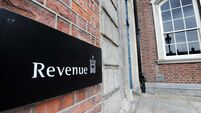US stocks soar after interest rate cut
A jubilant Wall Street barrelled higher today after the Federal Reserve cut its benchmark interest rate by a larger-than-expected half percentage point.
The Dow Jones industrial average surged more than 330 points after the Fed announced its move - its biggest one-day point jump in nearly five years.
Although some investors hoped for a rate cut of that magnitude, most were betting on a smaller, quarter-point cut in the federal funds rate. The Fed responded to the spreading impact of credit market problems on the rest of the economy by saying, “the tightening of credit conditions has the potential to intensify the housing (market) correction and to restrain economic growth more generally.”
The Fed cut the benchmark fed funds rate to 4.75% after keeping it unchanged for more than a year. It has not lowered this rate since 2003. It also reduced the discount rate – what it charges banks borrowing from its discount window - by half a%age point to 5.25%. On Aug. 17, the central bank lowered the discount rate by a half-point to help keep cash moving in the US banking system.
The central bank’s decision and the wording of its accompanying economic assessment gratified a market that plunged during August amid fears that credit market tightness, spawned by a continuum of mortgage defaults and delinquencies, would send the economy toward recession.
There was no direct signal in the Fed’s statement that it would make further rate cuts. It said “some inflation risks remain” and that it will keep monitoring inflation developments. Still, it did not call inflation its “predominant policy concern” as it did after holding rates steady in early August.
“What it says to me is you had a major shift in the last couple of months from a Fed that was very concerned about inflation to one that is concerned about the health of the financial markets, the availability of liquidity,” said Jerry Webman, chief economist at Oppenheimer Funds Inc.
The Dow soared 335.97, or 2.51%, to 13,739.39. The last time it rose more than 300 points in one session was Oct. 14, 2002, when it gained 378 points. The blue-chip index is now only about 1.9% below its record close of 14,000.41 reached in mid-July.
The Standard & Poor’s 500 index rose 43.13, or 2.92 percent, to 1,519.78. The Nasdaq composite index gained 70.00, or 2.71%, to 2,651.66.
Small-cap stocks, badly beaten during the market’s summer turmoil, shot higher. The Russell 2000 index surged 30.82, or 3.97%, to 806.63.
Shorter-term Treasury issues rose and longer-term bonds fell. The yield on the benchmark 10-year Treasury note finished little changed at 4.47%, the same as late on Monday. Bond prices move opposite their yields.















